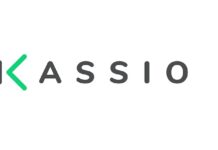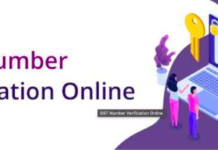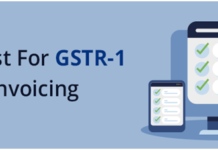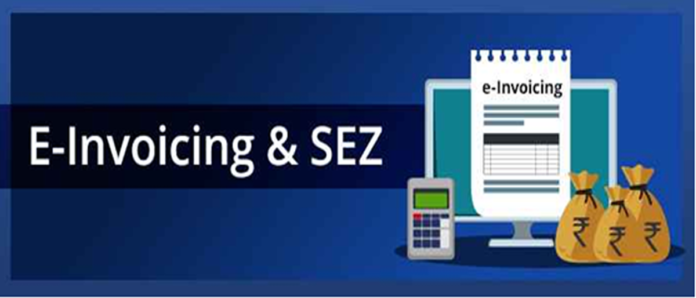The Government has mandated the e-Invoice generation under GST system for a large group of businesses.
The introduction of e-Invoicing has been a successful implementation in the GST structure as it has helped in benefiting the taxpayers in multiple ways.
e-Invoicing shall apply to all the B2B transactions & documents like Credit Notes, Debit Notes, RCM Invoices, Export & SEZ Invoices, B2B Invoices & B2G Invoices.
In this brief article, we shall specifically focus on the impact of e-Invoices on the Special Economic Zones & certain specific provisions made for the transactions carried out between the business entities located in the SEZs.
Stick till the end to learn more…
What is a Special Economic Zone?

Special Economic Zones (SEZ), are the geographical regions of the country that are classified by the government as special economic or trade zones.
These regions enjoy very simple tax & legal compliance regulations.
These regions enjoy certain privileges compared to the other business centers to develop the region by encouraging more investment which in turn will lead to more employment creation.
The region which is marked as a Special Economic Zone (SEZ) is considered as a foreign territory for trade & operation purposes. From this fact, we can understand that, any supplies made FROM or made TO the business located in Special Economic Zone, is considered as an inter–state supply and Integrated GST (IGST) is levied upon it.
Understanding Exports & Imports in SEZ
As the SEZ units are considered as foreign territories, the supplies made TO & FROM these units are termed as IMPORTS & EXPORTS respectively.
Before moving ahead with the applicability of e-Invoicing for Special Economic Zones, it is very important to know certain terminologies that we will be using in the article ahead.
What does EXPORT mean in SEZ?
- Exporting goods or services outside India from an SEZ unit.
- Supplying of goods or services from one developer in SEZ to another unit of the same SEZ or different SEZ within the country.
What does IMPORT mean in SEZ?
- Importing of goods or services from a region outside India, by any mode of transport.
- Receiving of goods or services from one developer in SEZ to another unit of the same SEZ or different SEZ within the country.
Working of e-Invoicing in SEZ

As mentioned in the above segment, we know that all the supplies made to the SEZ are considered as the Exports/Imports.
Hence, the e-Invoice Generation will apply to all the supplies MADE TO the SEZ units.
However, the e-Invoice generation will not apply to the supplies MADE FROM the SEZ units.
- e-Invoicing on IMPORTS to SEZ – YES.
- e-Invoicing on EXPORTS from SEZ –NO.

A. Supplies made TO SEZ units.
According to the current eligibility criteria of the e-Invoicing system, the businesses with aggregate turnover above 500 Crore are mandated to generate the e-Invoices by furnishing all the invoice details on the Invoice Registration Portal (IRP).
If your business falls under this category and you are making a supply to a business located in the SEZ, then it will be mandatory for the supplier to create the invoices of such supplies in the specified Schema & upload them to the IRP for unique Invoice Reference Number (IRN) & QR code generation.
This has been mandatory for all the businesses that are eligible for e-Invoicing and are supplying goods or services to the SEZ unit. Also, these businesses must generate the e-Invoice with a unique IRN from the IRP portal.
GST e-Invoicing Covers- Supplies to SEZ (with or without GST payment), Exports (with or without GST payment), Deemed Exports (with or without GST payment).
B. Supplies Made FROM SEZ units.
About the GST Notification (Central Tax) No. 61/2020 dated 30th July 2020, all SEZ units/developers are EXEMPTED from generating e-Invoices for their supplies.
If your business is located in the Special Economic Zone and you fall in the aggregate turnover bracket eligible for e-Invoicing despite it you will not be mandated by the government for the generation of IRNs for any of your invoices.
E v-Invoices will not be required to be generated for the supplies received from the Special Economic Zones.
However, as per a recent notification, e-Invoicing will apply to SEZ in special cases, it is applicable if they have specified turnover and fulfill other conditions for an e-Invoice generation.
Special Case:
There are some instances where e-Invoicing applies to the businesses in SEZs.
To understand this better, let me give you an example.
Consider a business entity ‘Action Software Pvt. Ltd.’ This business is located in the SEZ ‘Business Hub’ in Pune city.
Now consider that the SEZ unit, SEZ Developer, and the regular Domestic Tariff Area (DTA) are registered under the same legal entity.
This means that they have the same ‘Permanent Account Number’ (PAN).
Also, the business entity has an aggregate turnover that exceeds 500 Crore.
In this case, the SEZ unit will be exempted from generating the e-Invoice but the SEZ Developer and the DTA will be required to carry out e-Invoicing.
Note:
The recipients of the goods or services are required to identify SEZ Units & SEZ developers as separate entities, considering that they display unique traits & IRN requirements.
e-Invoicing under GST & its Impacts on GST Refunds

When the business entity lies in the Special Economic Zone, the regulations related to e-Invoicing are different as discussed in the above sections.
The same holds for the GST Refunds.
Exports & SEZ transactions do attract refunds & with e-Invoicing impacting these transactions, it will also have an impact on the refunds.
The businesses which are eligible and fall under the prescribed turnover bracket have to furnish the data of the invoices, credit notes & debit notes on the IRP.
These invoices should be related to the exports of the SEZs.
The businesses which are liable to e-Invoice generation of Export & SEZ Invoices must report their Invoices to the IRP & generate IRN for their invoices, credit notes & debit notes.
The IRNs corresponding to these e-Invoices will be helpful for the businesses while claiming the refunds.
Hence, it is more likely that the Government will process the refund request sooner & in real-time. As the e-Invoices generated on the IRP portal are authenticated by the Government and are also accurate if the reconciliation of invoices is done before uploading.
Additionally, IRNs will be helpful for businesses while claiming the Refunds as the e-Invoices are accurate, validated & authentic documents.
So the chances are that the Government will process the refund request sooner & in real-time as the invoices are also created accurately & in real-time.
In Conclusion
In this article, we have discussed the specific provisions made concerning the e-Invoicing system for the Special Economic Zones (SEZs).
e-Invoicing is one of the important features added to the GST structure and it has been nothing but success since its inception.
e-Invoicing has multiple benefits including the claiming of maximum Input Tax Credit.
Hence, proper and accurate uploading of the invoice data on the IRP is very important.
You can use some e-Invoicing Software which will allow you seamless e-Invoice generation with a fully automated process and no human intervention.
This will reduce the probable errors which can be introduced when a business opts for manual uploading of all the invoices on the IRP to generate corresponding IRNs.
It is always better to take measures first than to suffer the heavy consequences later.
Until the next time…


















































